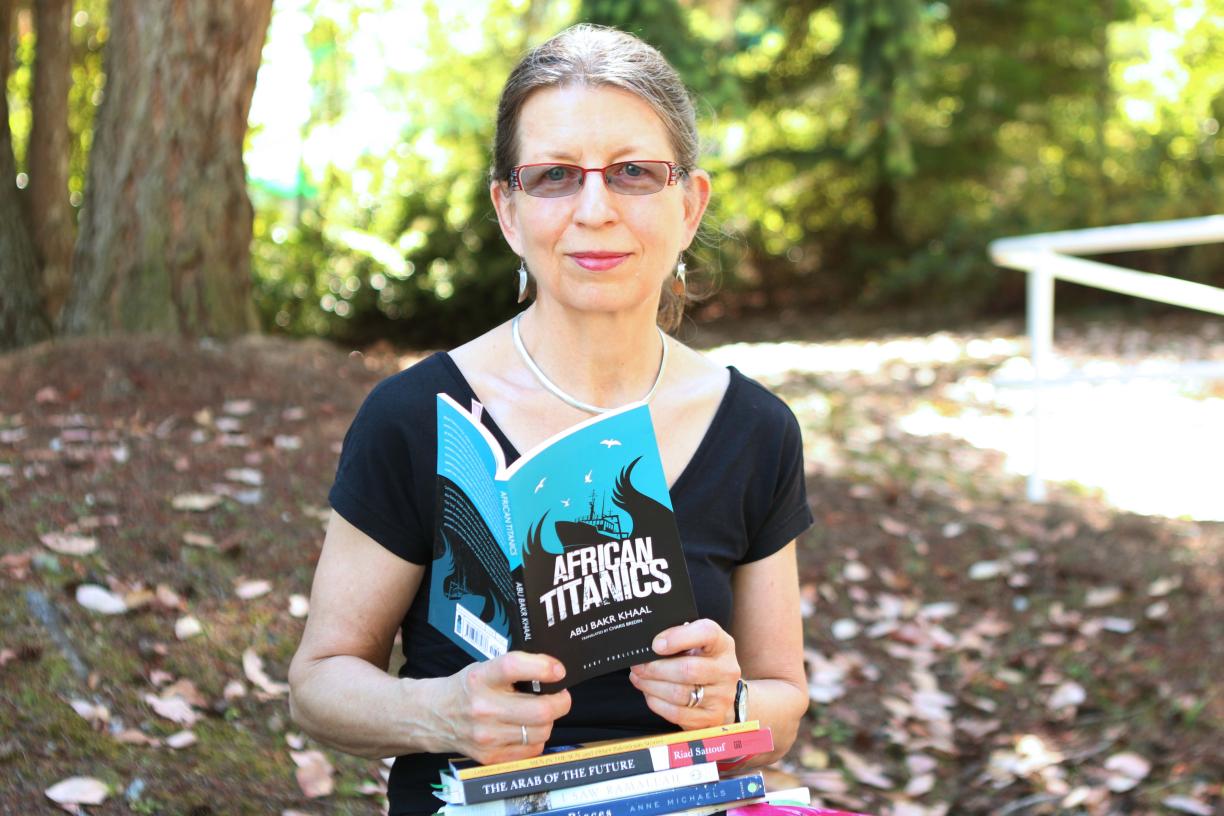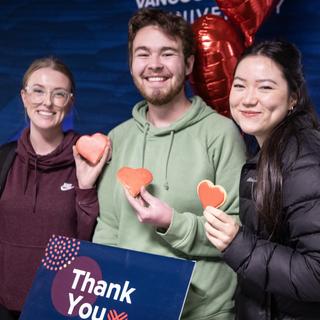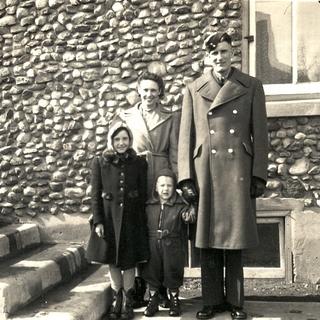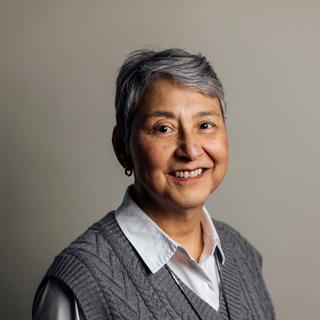Dr. Katharina Rout retired from teaching at VIU in 2017 and is now a professor Emerita. Since retiring, she has translated four book-length translations of works into English.
Dr. Katharina Rout taught in the English Department in VIU’s Faculty of Arts and Humanities from 1988 – 2017. She had a seat at the table as VIU evolved from a college to a university-college, into a university, and began to mature into its current state. She is the founding Chair of the Education Council, which was the precursor to the Senate, was awarded a Provost’s Teaching Award for Innovation in Teaching, and now has been honoured as a Professor Emerita.
Her list of contributions is extensive, and her accolades are well-deserved. However, she says the part of her teaching career for which she feels most privileged was to help the English Department internationalize its curriculum and make it a welcoming place for students of all linguistic and cultural backgrounds, not the least of which was teaching International Literature and Literature in Translation. Two of her favourite course topics were Arabic Fiction in Translation and Refugee Literature.
For many years, Rout has been a professional translator, taking non-English works and translating them into English. Since retiring from teaching in 2017, she has completed work on four book-length translations and has recently undertaken a fifth on a very famous piece.
Dr. Katharina Rout’s recently completed, book-length translations:
2019 [Non-fiction] Ecological Footprint: Managing our Biocapacity Budget by Mathis Wackernagel from the Global Footprint Network and Bert Beyers (New Society Publishers)
2020 [Literary Fiction] Soutine’s Last Journey by Swiss writer Ralph Dutli (Seagull Books)
2021 [Non-fiction] Dancing is the Best Medicine: The Science of How Moving to a Beat is Good for Body, Brain, and Soul by neuroscientists Julia F. Christensen and Dong-Seon Chang (Greystone Books)
2022 [Literary Fiction] Branded: A Diary by Dada artist, performer, and writer Emmy Hennings (Broadview Press)
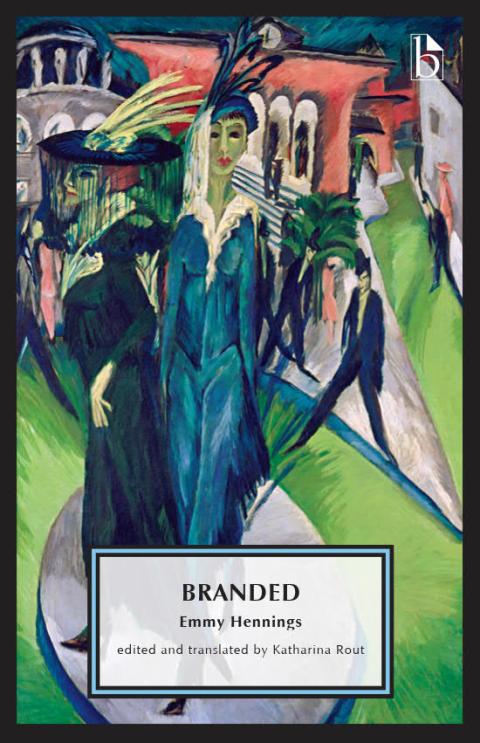
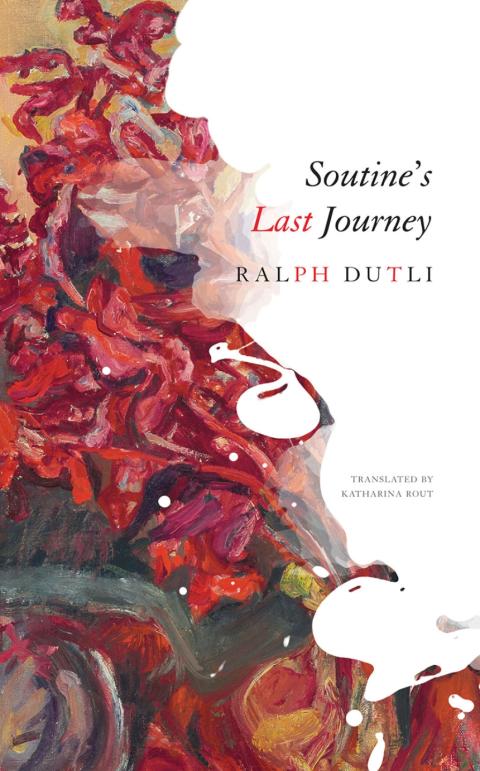
She recently filled us in on these latest projects, and the ever-growing importance of translating from other languages into English.
We caught up with her to learn about these projects and find out what is coming next.
Dr. Katharaina Rout:
Translation has always been a big part of my life. Like so many other Canadians, I am fortunate to have more than one language and know from personal experience that we constantly translate our stories and our cultures—ourselves, in fact—when we engage with each other. As a scholar, I know how immeasurably translations have shaped our literary tradition and how much of the news that we hear each day comes to us through translation.
But the cultural exchange between cultures and countries is unequal. In some countries translations make up as much as 60 percent of all publications. Worldwide, translations from English dominate. Translations into English, however, are relatively few. While Canada supports translations between its two official languages, it shares the overall imbalance that is better documented for the United States. For example, in 2021 American publishers released a total of 586,060 adult fiction titles but only 413 translations of fiction and poetry. Recent success stories of translated authors such as Elena Ferrante may change the imbalance, but for now, translators must continue to act as advocates for the foreign.
I especially love to translate writing that lets us encounter unfamiliar voices. Years ago, I translated novels by Galsan Tschinag, a Tuvan shaman from Mongolia, who writes mostly in German. More recently, my translation of Ralph Dutli’s experimental novel about the Jewish Belarusian painter Chaim Soutine, a contemporary of Chagall and Modigliani, and about his life and death in Nazi-occupied Paris gave me a chance to work on fiction that was profoundly political, spiritual, and transnational.
Emmy Hennings’s Branded is the first non-contemporary book I have translated. When her autobiographical novel came out in 1920, Hennings was called the most important woman writer of her day. The novel offers a sharp critique of patriarchy and the social injustices of the last decade of the German Empire and is infused with a mysticism that celebrates sexual love as a spiritual gift. Hennings was a Dada performer, an Expressionist writer, a streetwalker and promiscuous muse to the avantgarde, but above all an independent woman who claimed her own voice in experimental feminist writing. Translating this important modernist text challenged me as a translator. Providing a substantive introduction to her work and contextual materials for teaching it was an additional opportunity to use my research skills.
While Hennings’s novel was written during the First World War, Erich Maria Remarque’s famous All Quiet on the Western Front was written after the war and published only in 1929. I am now immersed in a re-translation of this arguably most widely read anti-war novel. At first, I wondered how to approach a text that seemed very much tied to its day. The flurry of interest in WW1 that accompanied the centenary in 2014 had subsided and war seemed to have changed with precision weapons and drones that promised to reduce civilian deaths.
Then Putin’s army invaded Ukraine, and we again see images of soldiers in trenches that look like those in photos from 1914-18. Ukrainian men and women barely out of school are fighting for their country, while young Russian soldiers are fighting a war they have not chosen and about whose purpose they may be bewildered—many of the soldiers on both sides are as young as Remarque’s narrator and his friends. Remarque’s novel feels frighteningly topical.
How should it be translated? Translations connect different places as well as different times. Readers of mine will face the last months of WW1 when the story takes place as well as the time of the novel’s publication more than a decade later. But they will also read the translation with an awareness that another war in Europe is causing immeasurable harm, threatens to spread, and has made nuclear war thinkable again. Catching these layers in my translation is my current challenge.

